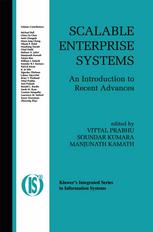

Most ebook files are in PDF format, so you can easily read them using various software such as Foxit Reader or directly on the Google Chrome browser.
Some ebook files are released by publishers in other formats such as .awz, .mobi, .epub, .fb2, etc. You may need to install specific software to read these formats on mobile/PC, such as Calibre.
Please read the tutorial at this link: https://ebookbell.com/faq
We offer FREE conversion to the popular formats you request; however, this may take some time. Therefore, right after payment, please email us, and we will try to provide the service as quickly as possible.
For some exceptional file formats or broken links (if any), please refrain from opening any disputes. Instead, email us first, and we will try to assist within a maximum of 6 hours.
EbookBell Team

4.4
12 reviewsThe National Science Foundation (NSF) is the leading sponsor of basic academic research in engineering, and its influence far exceeds its budget. We think NSF is at its best when it uses that influence to focus interest within the researcher community on critical new challenges and technologies. NSF's Scalable Enterprise Systems (SES) initiative, for which we were responsible in our successive terms in the division of Design, Manufacture and Industrial Innovation (DMII), was just such a venture. A collaborative effort spanning NSF's engineering and computer science directorates, SES sought to concentrate the energies of the academic engineering research community on developing a science base for designing, planning and controlling the extended, spatially and managerially distributed enterprises that have become the norm in the manufacture, distribution and sale of the products of U. S. industry. The of associated issues addressed included everything from management supply chains, to product design across teams of collaborating companies, to e-marketing and make-to-order manufacturing, to the information technology challenges of devising inter-operable planning and control tools that can scale with exploding enterprise size and scope. A total of 27 teams with nearly 100 investigators were selected from the 89 submitted proposals in the Phase I, exploratory part of the effort (see the list below). Seven of these were awarded larger multi-year grants to continue their research in Phase II. As the contents of this book amply illustrate, these investigations continue to flourish, with and without direct NSF support.